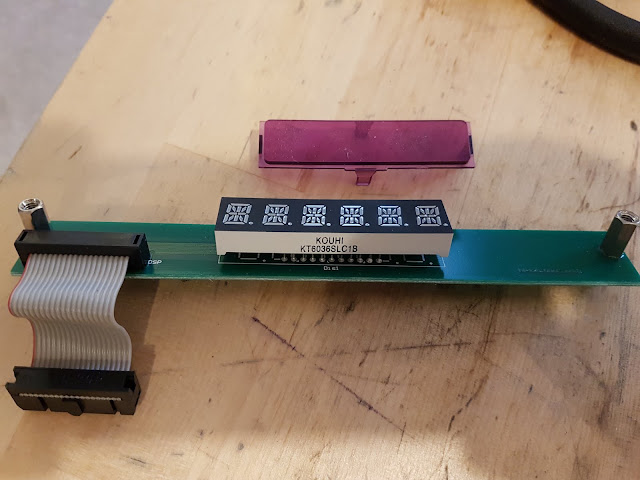Bit of a mixed bag this one. An amazing effects pedal with an array of customisable parameters, frustratingly locked behind a limited user interface and only editable when using the PC/Mac software. If you're willing to spend some time at the computer you can get some cool patches, but don't expect to be able to do that at a gig or during practice (unless you bring a laptop). The factory presets are pretty corny as well, So once you get over the initial "wow" factor, it's pretty hard to conceive of a way to use them musically.
So what's on the front panel?
1) Gain...that's input gain. That's right. This pedal has no control to quickly adjust the output level. The only way to set the present is via the PC software and If the preset is crazy loud you're just gonna have to accept it(!)
2) Cutoff Freq...this really needs to be an expression pedal input! Perhaps an idea for a mod.
3) Tone. This lets you go through the factory presets. As explained above, these are pretty unusable so I don't know why they added this as a control option.
4) Level/Dry. Basically a wet/dry mix. Probably the only useful control of the four. I heard a lot of people say this pedal hasn't got one, but it's right here. Plain as day.
There are also three footswitches: preset up, bypass and synth/octave. The octave effect is very underwhelming.
But what makes it tick inside? After taking this apart, its clear that this pedal is extremely well made. The case is a solid steel, clam shell. Its securely bolted together (you will literally need a security screwdriver to dismantle it). The led display and plastic control knobs are inset into the casing which makes it pretty rugged. I'll bet you could probably drop this out of a moving car and it would be fine.
The display and control knobs are mounted on separate PCBs, connected to the main board via ribbon cables.
A) Display board. Uses a standard 7 segment display. Note the purple cover :)

B) Control Knobs. Note the pots are Gain (50K log), Cutoff (50K Linear), Tone (50K Linear) and Dry (50K Log)

C) Main Board. The two auxiliary boards attach via the ribbon sockets to the left.
But what makes it tick inside? After taking this apart, its clear that this pedal is extremely well made. The case is a solid steel, clam shell. Its securely bolted together (you will literally need a security screwdriver to dismantle it). The led display and plastic control knobs are inset into the casing which makes it pretty rugged. I'll bet you could probably drop this out of a moving car and it would be fine.
The display and control knobs are mounted on separate PCBs, connected to the main board via ribbon cables.
A) Display board. Uses a standard 7 segment display. Note the purple cover :)

B) Control Knobs. Note the pots are Gain (50K log), Cutoff (50K Linear), Tone (50K Linear) and Dry (50K Log)

C) Main Board. The two auxiliary boards attach via the ribbon sockets to the left.








Comments
Post a Comment